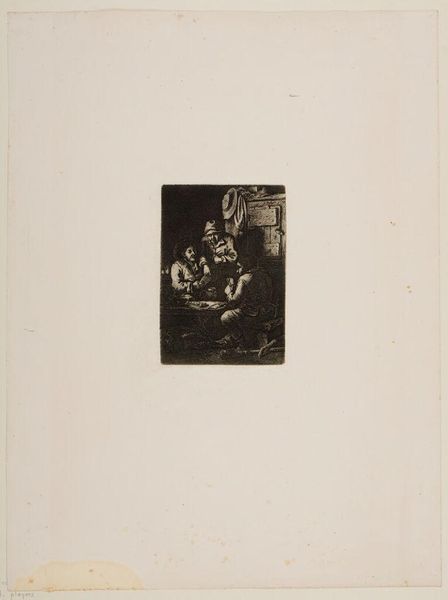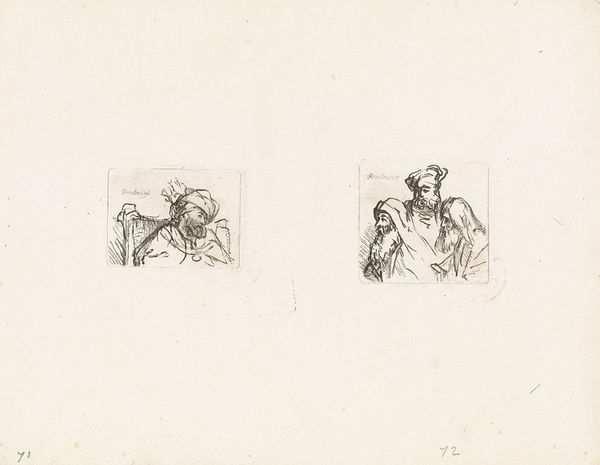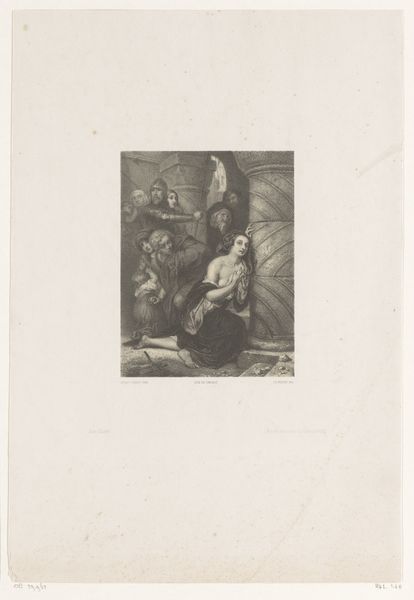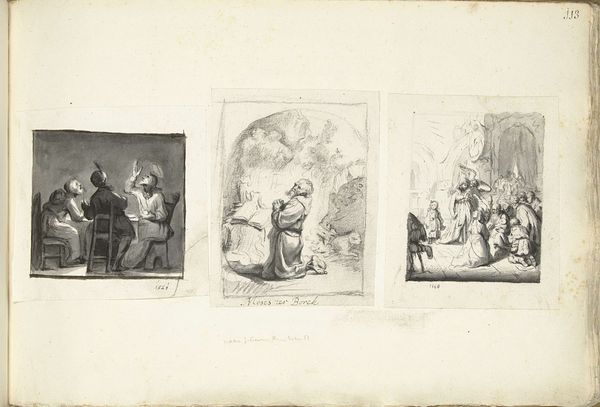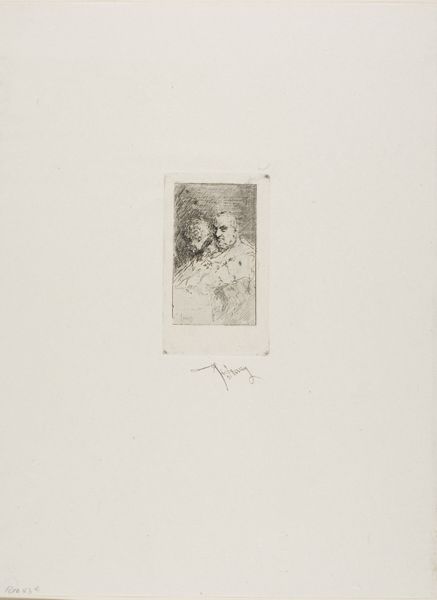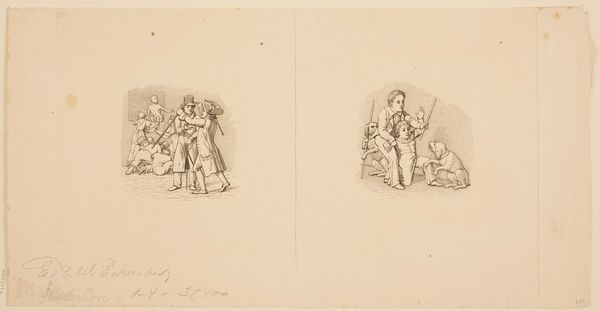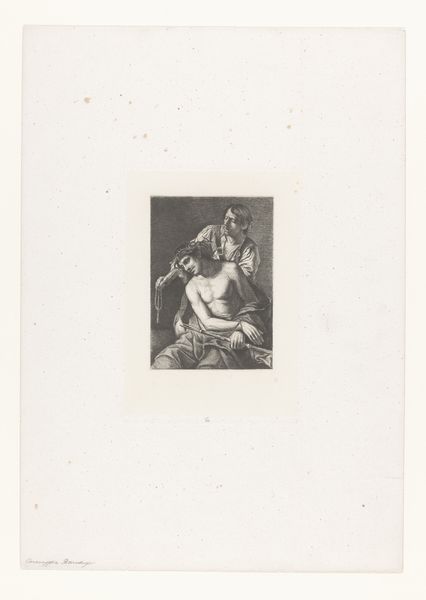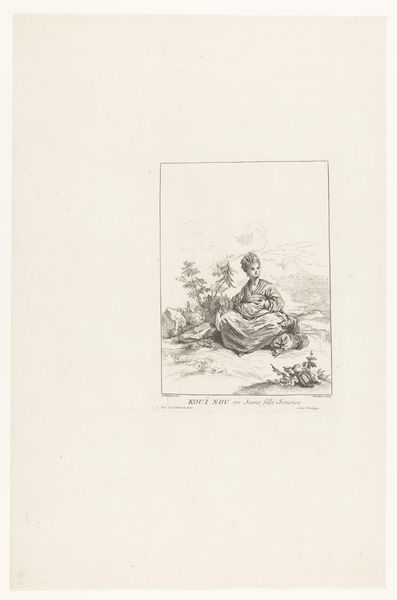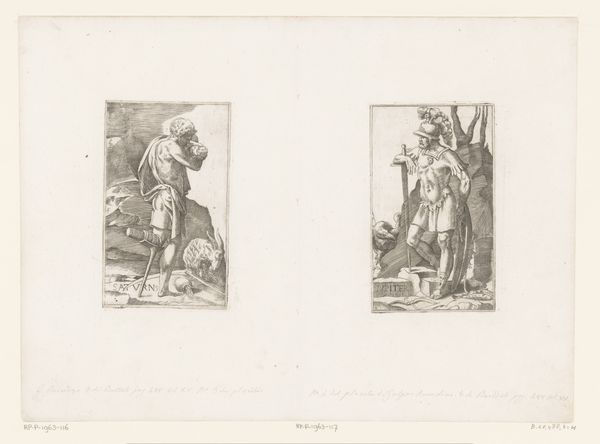
The Drinker; Sitting Man with his Hat in his Right Hand c. 17th century
0:00
0:00
Dimensions: left image: 8.3 Ã 6 cm (3 1/4 Ã 2 3/8 in.) left plate: 10.3 Ã 6.7 cm (4 1/16 Ã 2 5/8 in.) right image: 8.2 Ã 5.9 cm (3 1/4 Ã 2 5/16 in.) right plate: 10.3 Ã 6.5 cm (4 1/16 Ã 2 9/16 in.) sheet: 20.4 Ã 27.7 cm (8 1/16 Ã 10 7/8 in.)
Copyright: CC0 1.0
Curator: Cornelis Bega, a Dutch Golden Age artist, created these prints, titled "The Drinker; Sitting Man with his Hat in his Right Hand." They reside here at the Harvard Art Museums. Editor: The etching technique really emphasizes the rough texture of the men's clothing and the surfaces they sit on. It gives a sense of lived-in materiality. Curator: Bega's work often depicted scenes of everyday life. During the 17th century, there was a growing market for images of ordinary people engaged in daily activities, which these prints certainly capture. Editor: These images reflect the time's shifting social structures, showing working-class people. Consider the men's clothes and the way they are relaxing with alcohol - what does that tell us about consumption during this era? Curator: Absolutely, and Bega's prints played a role in shaping public perception of the working class. The prints also served as a way for the middle and upper classes to consume images of a lifestyle different from their own. Editor: Looking at the material processes, the lines feel very deliberate, even in their seeming spontaneity. It reflects a controlled hand depicting uncontrolled scenes. Curator: These prints offer a fascinating lens through which to view 17th-century Dutch society and its evolving relationship with class and representation. Editor: Indeed, it is a fascinating look at how art materials and social realities intertwined during that period.
Comments
No comments
Be the first to comment and join the conversation on the ultimate creative platform.
